Table of Contents
ToggleIn today’s fast-paced digital world, teams are no longer confined to the same office or even the same time zone. Enter collaborative tech software, the superhero of remote work that saves the day! It’s like having a virtual office where ideas flow as freely as coffee on a Monday morning. With the right tools, collaboration becomes seamless, turning even the most chaotic brainstorming session into a symphony of productivity.
Overview of Collaborative Tech Software
Collaborative tech software supports teams in enhancing productivity and communication. These tools encompass a variety of applications designed for real-time collaboration, project management, and file sharing. Users benefit from centralized platforms that streamline processes and reduce the inefficiencies of traditional communication methods.
Many software programs facilitate instant messaging, video conferencing, and document editing, allowing team members to connect easily, regardless of location. Examples include applications like Slack, Microsoft Teams, and Zoom, which provide various features tailored to different collaboration needs.
Integration capabilities play a significant role in enhancing collaborative software. When combined with existing tools like Google Workspace or Trello, users enjoy a seamless experience that boosts workflow and cohesiveness within teams. Developers prioritize user-friendly interfaces, ensuring that individuals can navigate software without extensive training.
Security features are also critical in collaborative software environments. Effective tools implement end-to-end encryption and secure user authentication, safeguarding sensitive information exchanged during collaboration. Compliance with industry standards helps organizations trust these platforms.
Functionality is diverse among collaborative tools. Many applications offer task tracking, file versioning, and collaborative brainstorming features, which help teams stay organized and focused. As companies adopt a remote or hybrid work model, the demand for reliable collaborative tech software continues to grow, shaping the future of teamwork.
Ultimately, organizations that embrace collaborative technologies often experience enhanced efficiency, improved communication, and greater overall satisfaction among team members.
Key Features of Collaborative Tech Software

Collaborative tech software offers essential functionalities that streamline teamwork and enhance productivity. These key features include real-time communication tools, project management integration, and file sharing and storage solutions.
Real-Time Communication Tools
Real-time communication tools play a crucial role in fostering collaboration among team members. Instant messaging options facilitate quick exchanges of ideas. Video conferencing enables face-to-face interactions, enhancing engagement during meetings. Many platforms also provide integrated voice calls, allowing for seamless conversations without switching applications. Notifications keep users updated on team activities. These features work together to create a responsive environment, significantly increasing team cohesion. Users can discuss tasks, resolve issues, and brainstorm ideas immediately, reinforcing teamwork.
Project Management Integration
Project management integration streamlines workflows by centralizing task assignments and progress tracking. Teams can utilize features that allow task creation, deadlines, and priority settings. Many collaborative tools integrate easily with popular project management applications like Trello and Asana. These integrations ensure that team members stay updated on project developments and deadlines. Visibility into each member’s workload fosters accountability. Teams can identify bottlenecks quickly and adjust resources as needed. This feature enhances overall efficiency, allowing organizations to complete projects on time.
File Sharing and Storage Solutions
File sharing and storage solutions offer a secure way to manage documents and resources. Collaborative tech software typically includes cloud storage options, making access to files convenient for all team members. Permissions can be set to control who can edit or view important documents. Version control features ensure that everyone works with the most current file. Integration with other tools also allows for seamless editing of documents in real time. These solutions simplify collaboration on projects, ensuring that team members can share and edit materials easily.
Benefits of Using Collaborative Tech Software
Collaborative tech software offers distinct advantages that organizations can leverage for better results. Utilizing these tools enhances overall team dynamics.
Enhanced Team Productivity
Increased productivity remains a primary benefit of using collaborative tech software. Teams engaged in real-time collaboration can accomplish tasks faster and more efficiently. Assigning roles and tracking progress is simplified through integrated project management features. Task prioritization becomes clearer, allowing team members to focus on high-impact activities without confusion. Studies show that teams using these tools report a productivity boost of up to 30%. Encouraging regular check-ins also keeps team members accountable and motivated to meet deadlines.
Improved Communication
Effective communication is crucial for successful team collaboration. Collaborative tech software minimizes misunderstandings by providing platforms for instant messaging, video calls, and feedback sharing. These tools foster an open environment where ideas can flow freely. Creating channels for specific projects or topics enhances focused discussions, reducing clutter. As a result, companies notice a significant improvement in team morale and engagement. Research indicates that enhanced communication can lead to a 25% increase in team satisfaction ratings.
Streamlined Workflows
Streamlining workflows represents another key advantage of collaborative tech software. Integrating diverse tools into a single platform allows for seamless transitions between different tasks. Document sharing and editing happen instantly, eliminating delays often caused by email exchanges. Automating routine processes further reduces manual work, freeing up time for strategic initiatives. Organizations report enhanced efficiency through centralized task management, where every team member can view priorities and updates in real time. Overall, adapting to these workflows results in quicker project turnarounds and better resource allocation.
Popular Collaborative Tech Software Options
Various collaborative tech software options provide teams with essential tools for remote work. These tools enhance productivity, streamline workflows, and foster effective communication.
Slack
Slack serves as a premier instant messaging platform for teams. It allows for organized conversations through channels tailored to specific projects or topics. Users can share files directly within conversations, facilitating quick access to information. Integrated tools, such as Google Drive and Trello, benefit project management and enhance productivity. Customizable notifications help users stay updated without being overwhelmed. Slack’s user-friendly interface supports both desktop and mobile devices, ensuring teams remain connected no matter where they are.
Microsoft Teams
Microsoft Teams combines communication and collaboration features into a single platform. Team members engage through chat, video calls, and document sharing, streamlining daily operations. Direct integration with Microsoft 365 enhances productivity by allowing real-time editing of documents and spreadsheets. The application supports customizable tabs for users to access important resources quickly. Security features, like multifactor authentication, safeguard sensitive information as teams work together in a secure environment. Overall, Microsoft Teams adapts seamlessly to various business needs.
Zoom
Zoom focuses primarily on video conferencing, making it a popular choice for remote meetings. It provides high-quality video and audio, creating a professional setting for discussions. Users can schedule meetings easily, with links shared via integrations with calendars. Screen sharing and whiteboard features enhance engagement during presentations and brainstorming sessions. Virtual backgrounds allow users to personalize their meeting environments while maintaining professionalism. Zoom caters to diverse needs, from small team huddles to large webinars, fostering efficient communication across organizations.
The evolution of collaborative tech software has fundamentally changed how teams operate in remote environments. By providing tools that enhance communication and streamline project management, these platforms empower teams to work more effectively and efficiently.
As organizations continue to adapt to remote work, embracing these technologies will be crucial for maintaining productivity and fostering collaboration. The benefits of real-time communication and integrated workflows are clear, leading to improved team dynamics and satisfaction.
Investing in the right collaborative tools not only enhances productivity but also creates a more connected and engaged workforce. Companies that prioritize these solutions will likely find themselves at a competitive advantage in today’s fast-paced business landscape.






